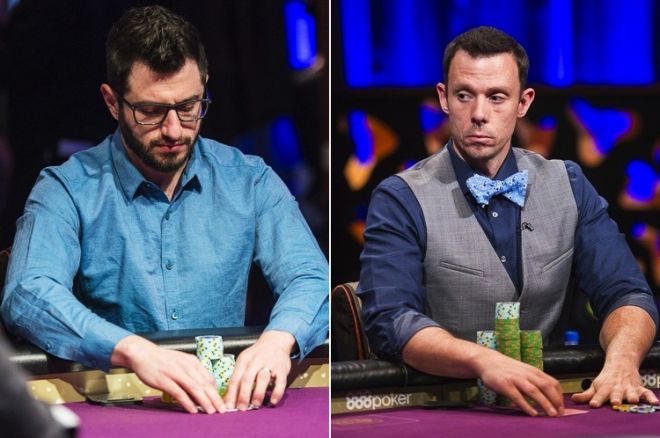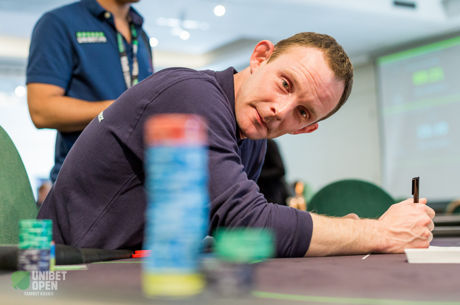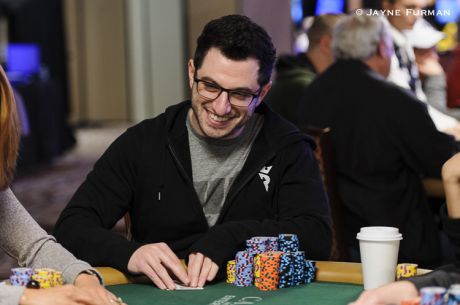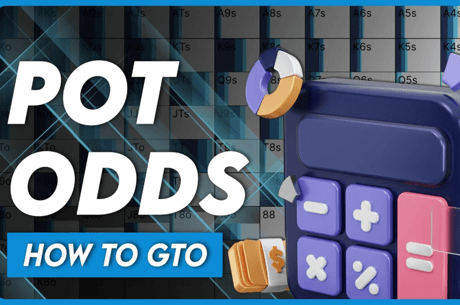Phil Galfond and Matt Berkey on “Old School” v. “New School” Approaches

Over a decade ago, the rise of online poker created a kind of conflict between professional players who had made their careers strictly playing live and a new, significantly large group of "online pros." The latter group was mostly comprised of younger players — unsurprisingly — which thereby added a kind of "generation gap" that tended to distinguish the two categories of players even further.
Generally speaking, the "old school" live pros were usually characterized more often than not as so-called "feel" players thanks to their experience with table talk, recognizing tells, psychology and the "mental game," and other intangibles.
Meanwhile the "new school" online crowd were frequently considered "math" players apt to base their decisions strictly upon pot odds and probabilities, including incorporating increasingly complex data thanks to the use of HUDs ("Heads-Up Displays") and tracking software while playing.
Questioning the "Old School"
I recall once watching an early live televised poker broadcast about 10 years ago where an especially well known pro sat in for a short while to help with commentary. The term "fold equity" had been used at an earlier point in the program, and a viewer had written in asking what the term meant. The question was put to the pro who had to admit he didn't know what the term meant.
Even today, not everyone knows that fold equity refers to the amount of equity a player gains in a hand from the likelihood an opponent will fold to a bet. That is to say, if I push all in on the turn while drawing to the nut flush, I have both the equity that comes from the percentage chance I'll hit my flush plus whatever additional percentage chance there is that you'll fold your hand and I won't need to improve my hand.
The truth is, "fold equity" cannot be calculated exactly. (In fact, being able to assess the likelihood of an opponent folding is also very often something that requires "feel," too.) However, the "new school" player can still find ways to be very precise with assigning percentages in such spots to help decide upon a course of action.
In any case, the term was relatively new back then, and to some not being familiar with it marked the pro as an "old school" player, even if he most certainly understood and often used the concept.
Profiling the "New School"
Meanwhile, the "new school" player was often similarly characterized as proficient in one area (the math of the game), but lacking certain knowledge or awareness of other, less-easily quantified aspects of poker.
Back in the spring of 2011 — just three weeks before Black Friday, in fact — there appeared an interesting profile of Daniel "jungleman" Cates in The New York Times. The article by Jay Caspian Kang, titled "Online Poker's Biggest Winner," in a way tried to introduce the "new school" online pro to a wider audience.
The article presented Cates as a kind of representative of a large category of players, a group among whom he was at the time one of the most successful. The article drew comparisons between online poker and other video games, showing how Cates's rise (in mostly heads-up games) kind of mirrored someone mastering a video game through repetition.
The article also suggested of Cates and other young online pros that while they certainly knew what "fold equity" and "expected value" and other poker-related concepts were, they might have lacked other knowledge about human behavior — i.e., the kinds of things only gathered by "life experience" that one isn't necessarily able to learn about sitting at a computer.
Old School v. New School, circa 2016
The categories of "old school" and "new school" still persist today, although in 2016 the distinction between "live pros" and "online pros" has largely disappeared given than nearly all the top players are consistently found in both arenas.
This week's 2016 Super High Roller Bowl has again inspired some discussion of the two categories, in part because of the fact that both the older generation of players who learned the game in the live arena and the younger generation of (mostly) online-trained players are well represented among the field.
Last night PokerNews' Sarah Herring took the opportunity during a break in the action to ask a couple of players to talk about the status of the "old school vs. new school" argument as it exists today, and both had some interesting things to say.
Phil Galfond describes himself as being "50-50" or equally guided by both modes — the psychological, read-based approach of the "old school" and the math and/or theory-based approach of the "new school" — when at the tables. Meanwhile Matt Berkey, who calls himself a "live guy by heart," similarly recognizes the importance of newer ideas about optimal play while still believing that poker is "a people game first."
PokerNews Editor-in-Chief Donnie Peters also weighs in at the end to talk about the status of the "old school/new school" debate today, previewing a topic he'll be exploring further during tonight's episode of the PrimeTime Poker Report. Take a look:
For more on the topic, catch tonight's PrimeTime Poker Report airing at 9 p.m. ET on PokerCentral.
What do you think of the "old school" versus "new school" distinctions as they apply to today's game? Share your thoughts in a comment below.
Photos: ©Joe Giron/Poker Central
Want to stay atop all the latest in the poker world? If so, make sure to get PokerNews updates on your social media outlets. Follow us on Twitter and find us on both Facebook and Google+!









